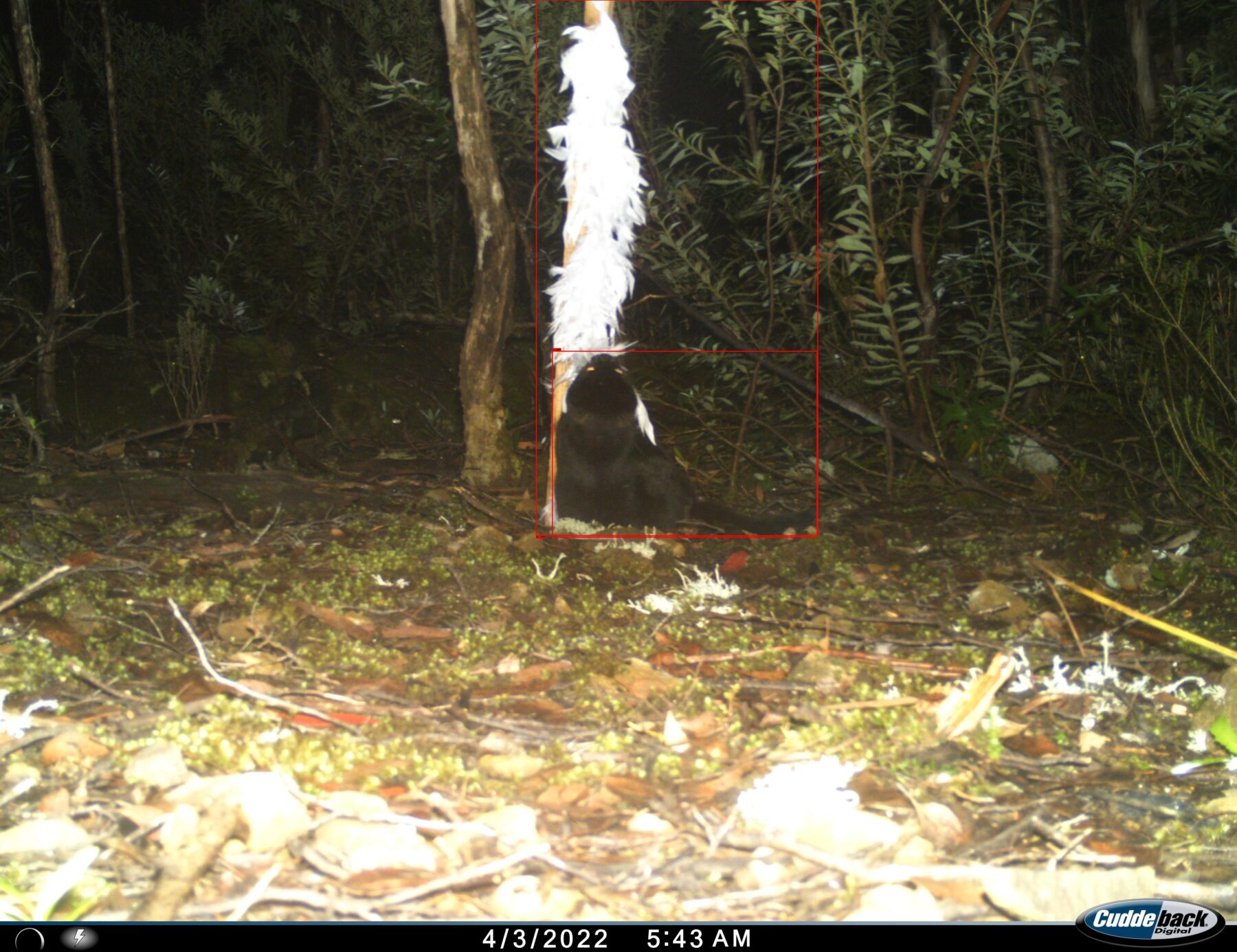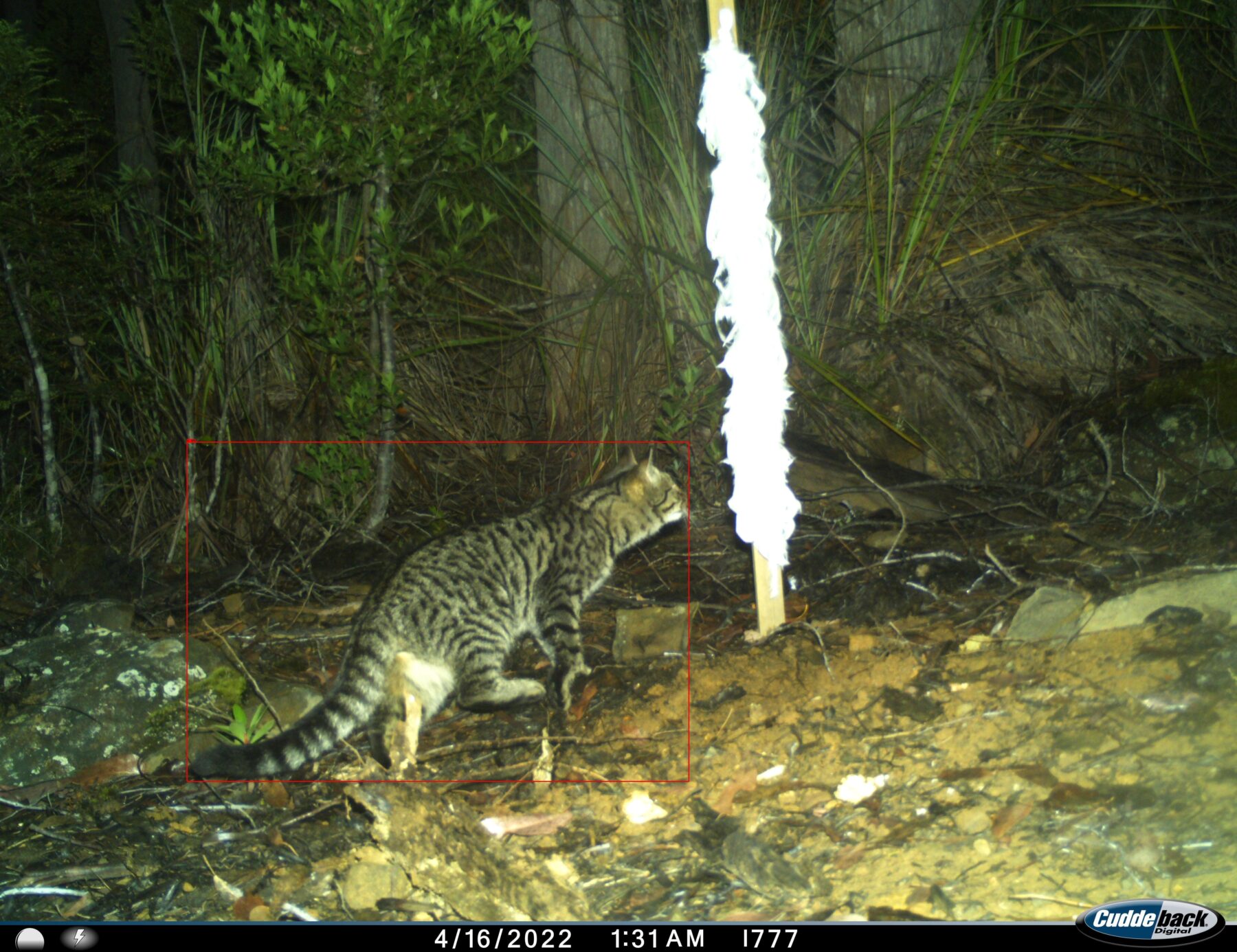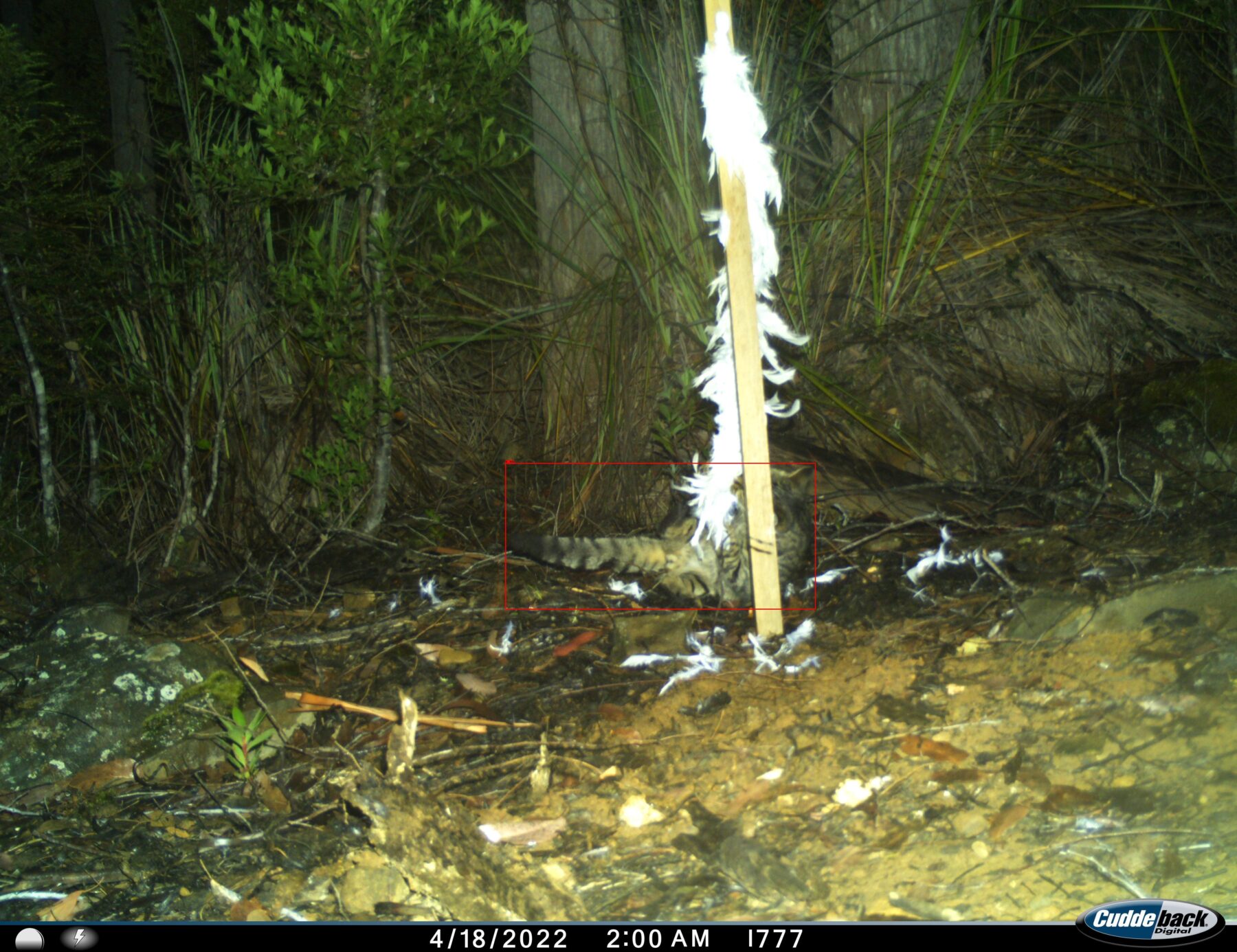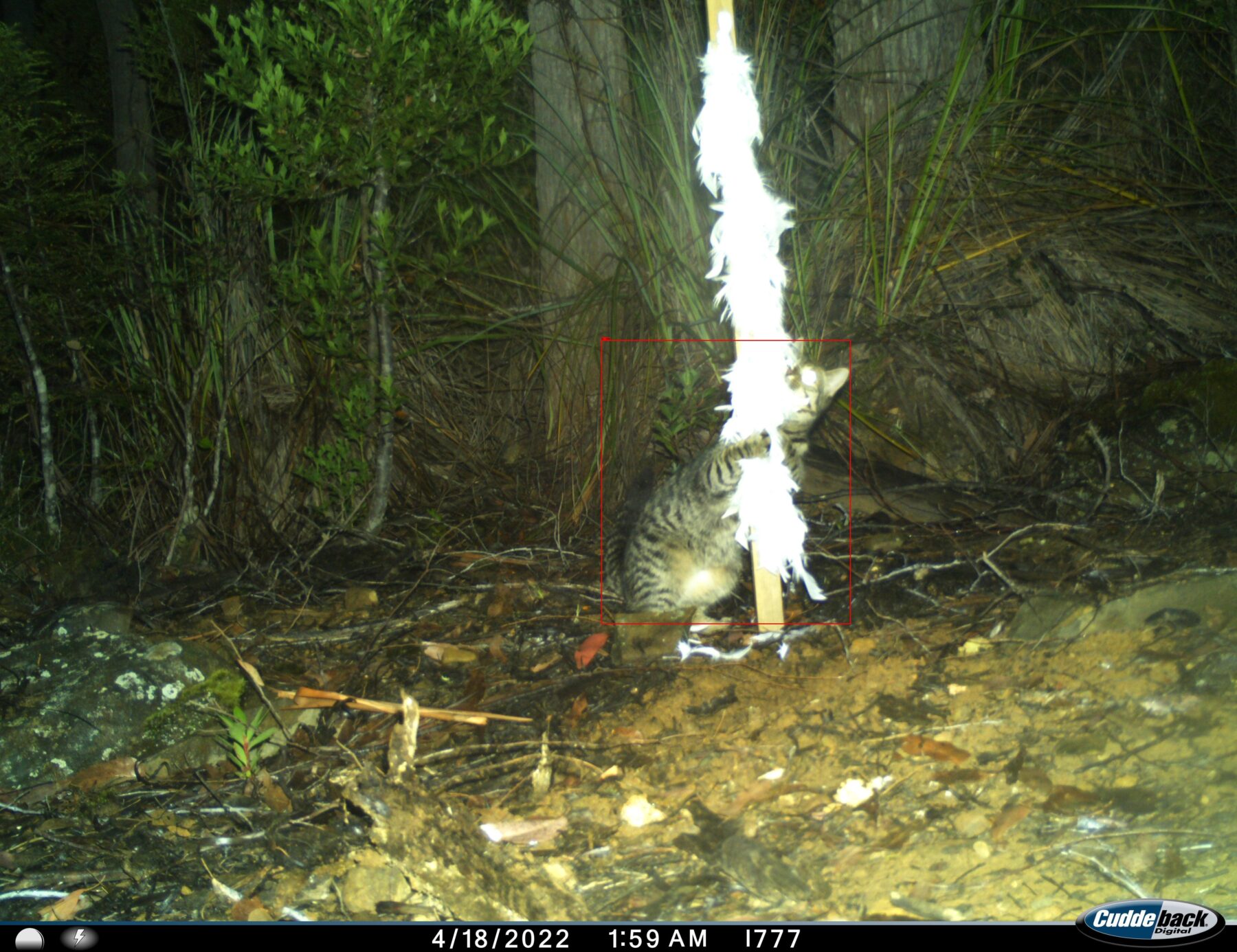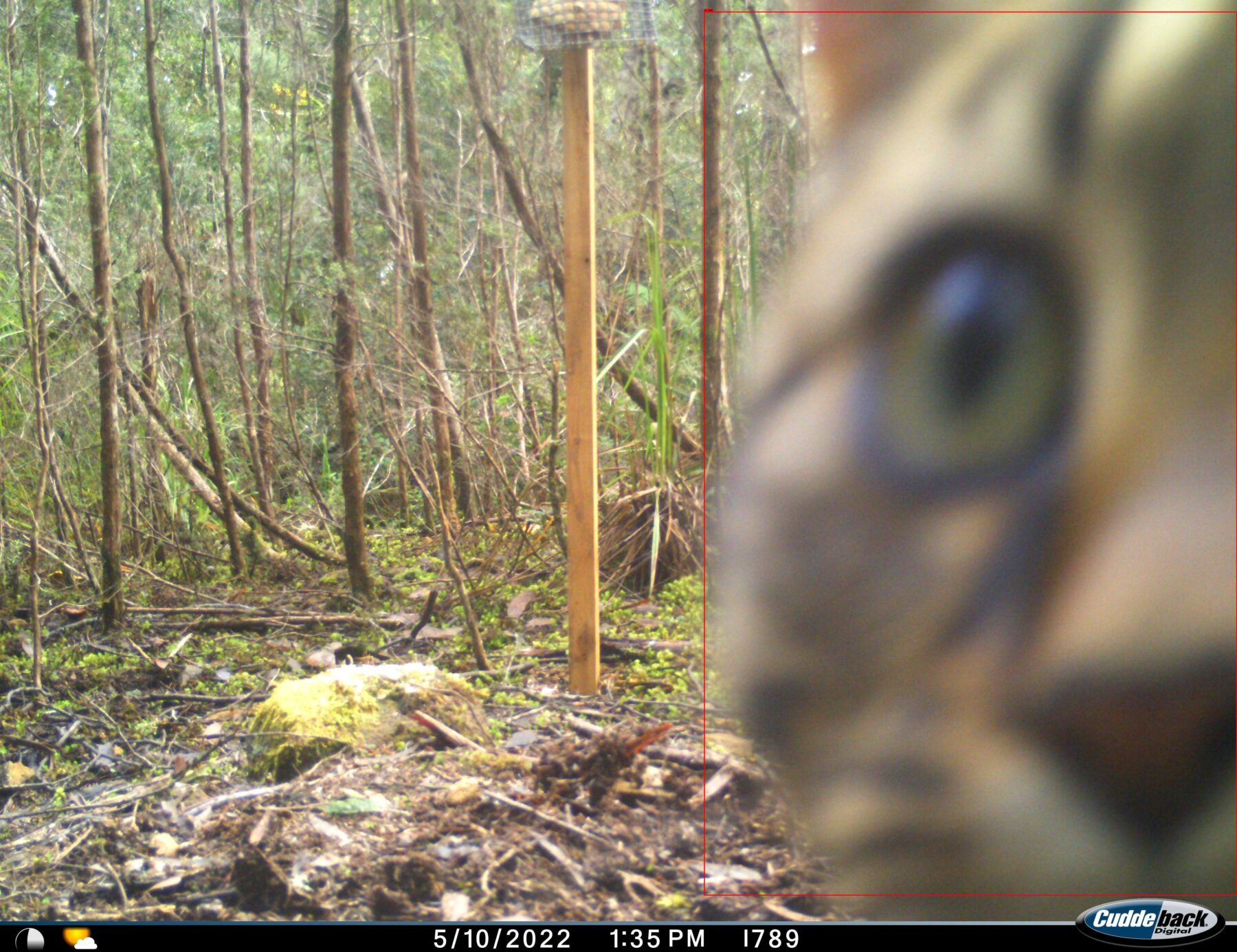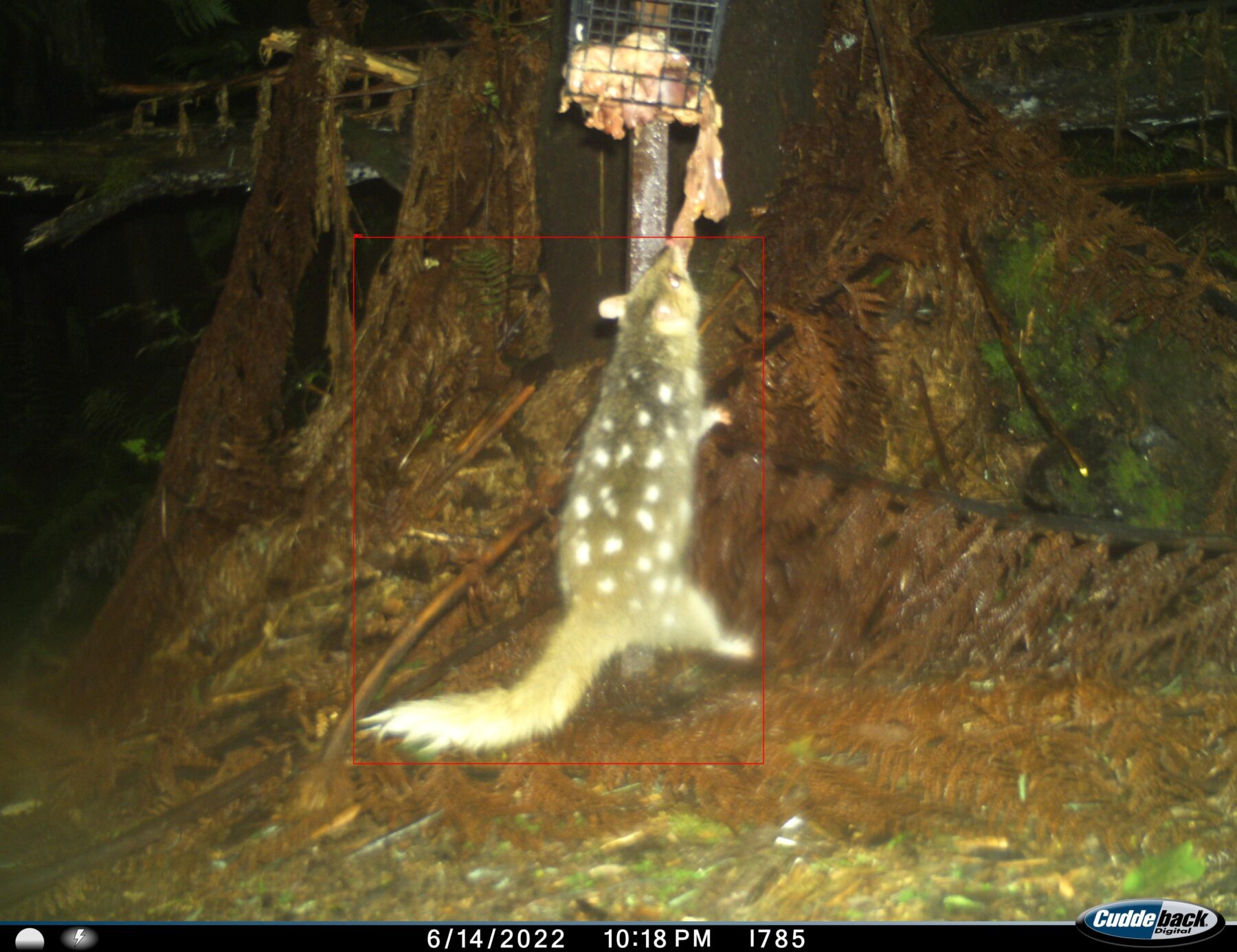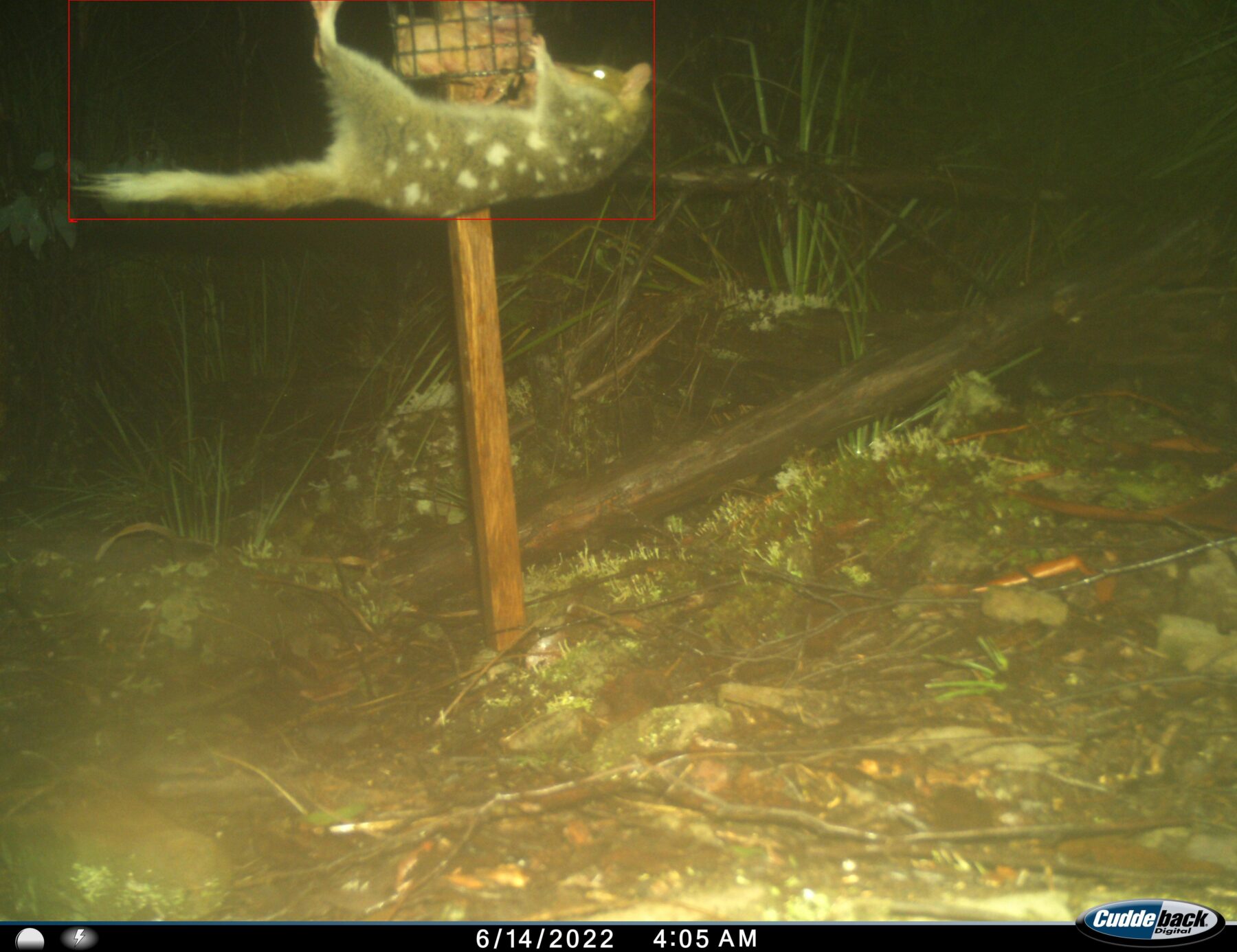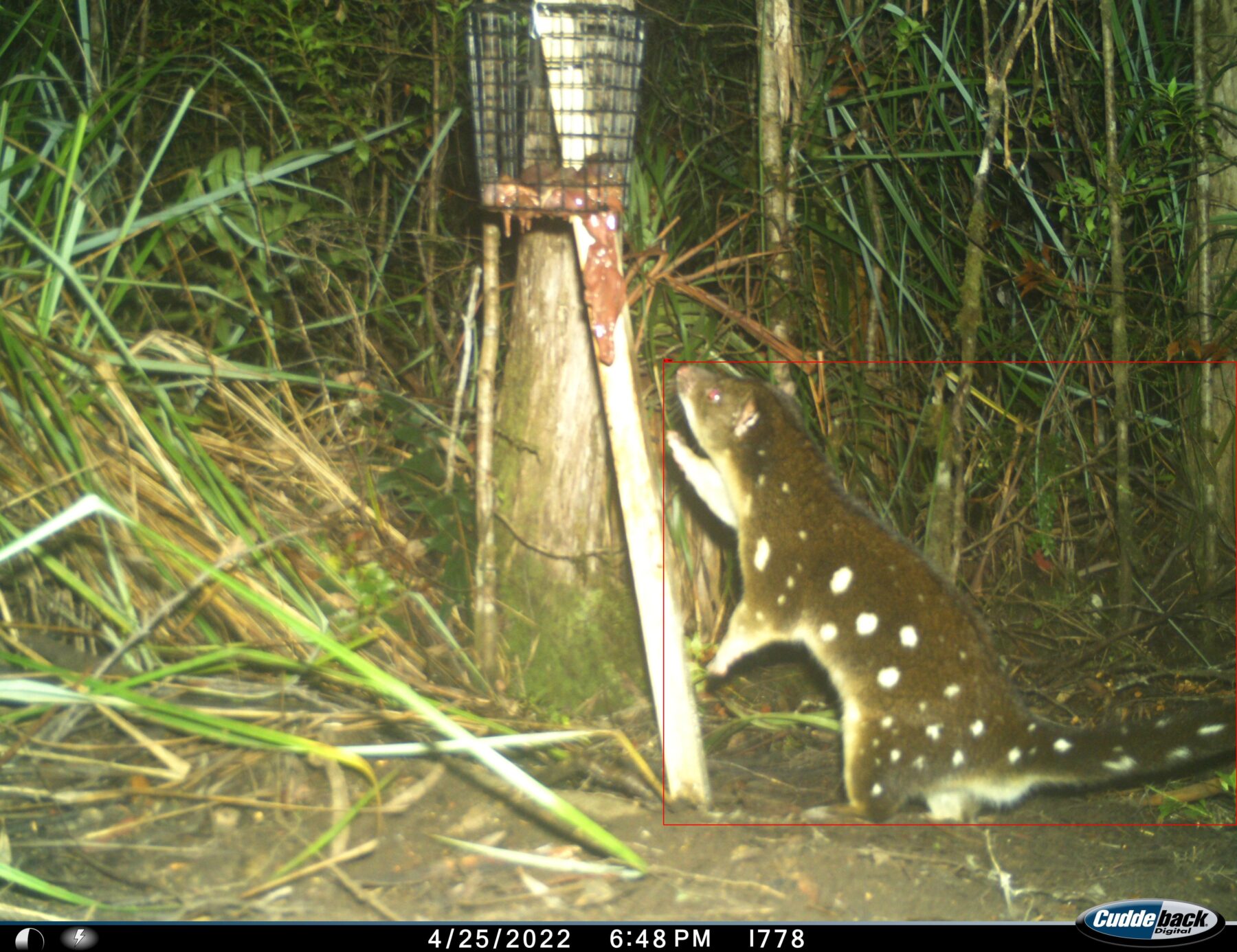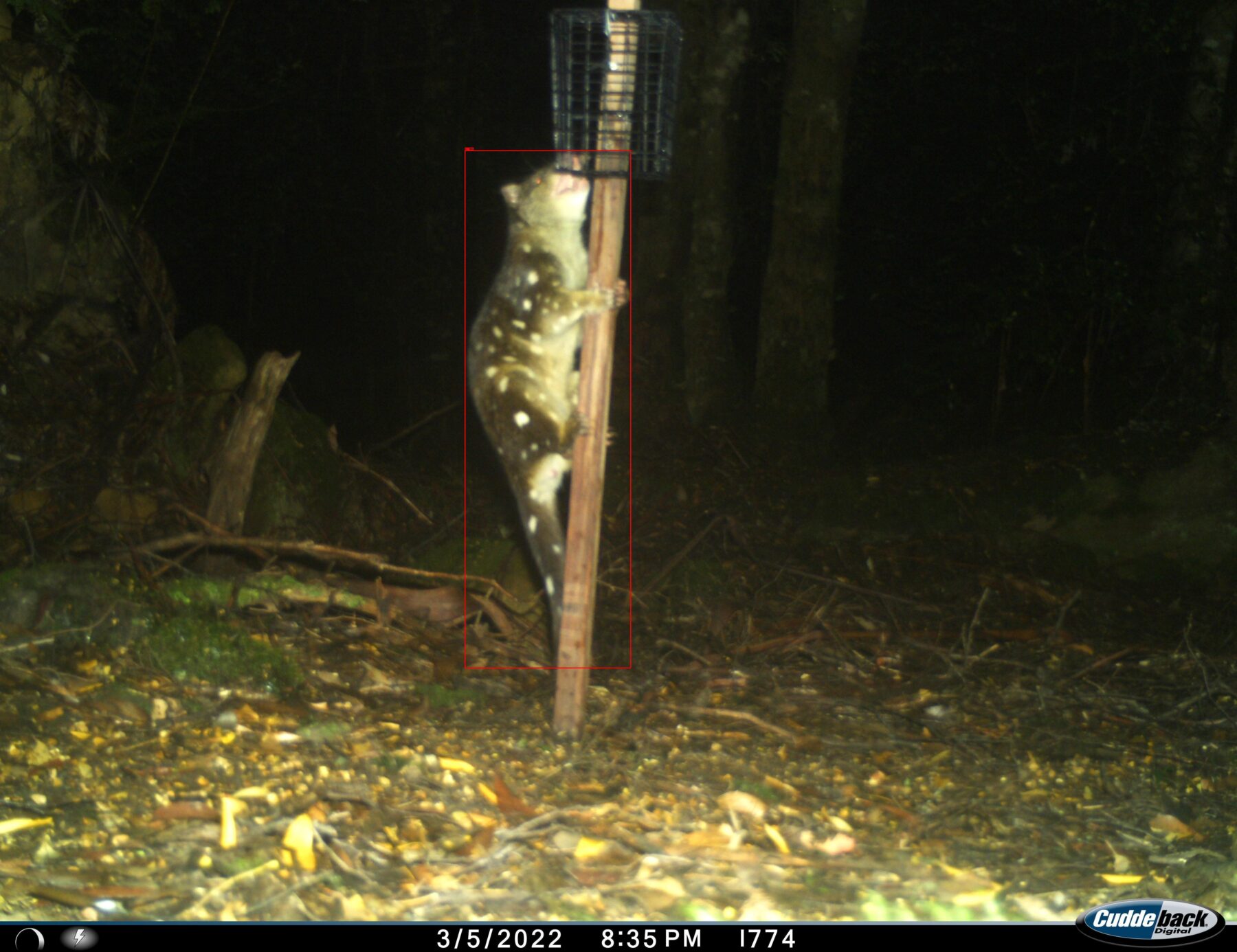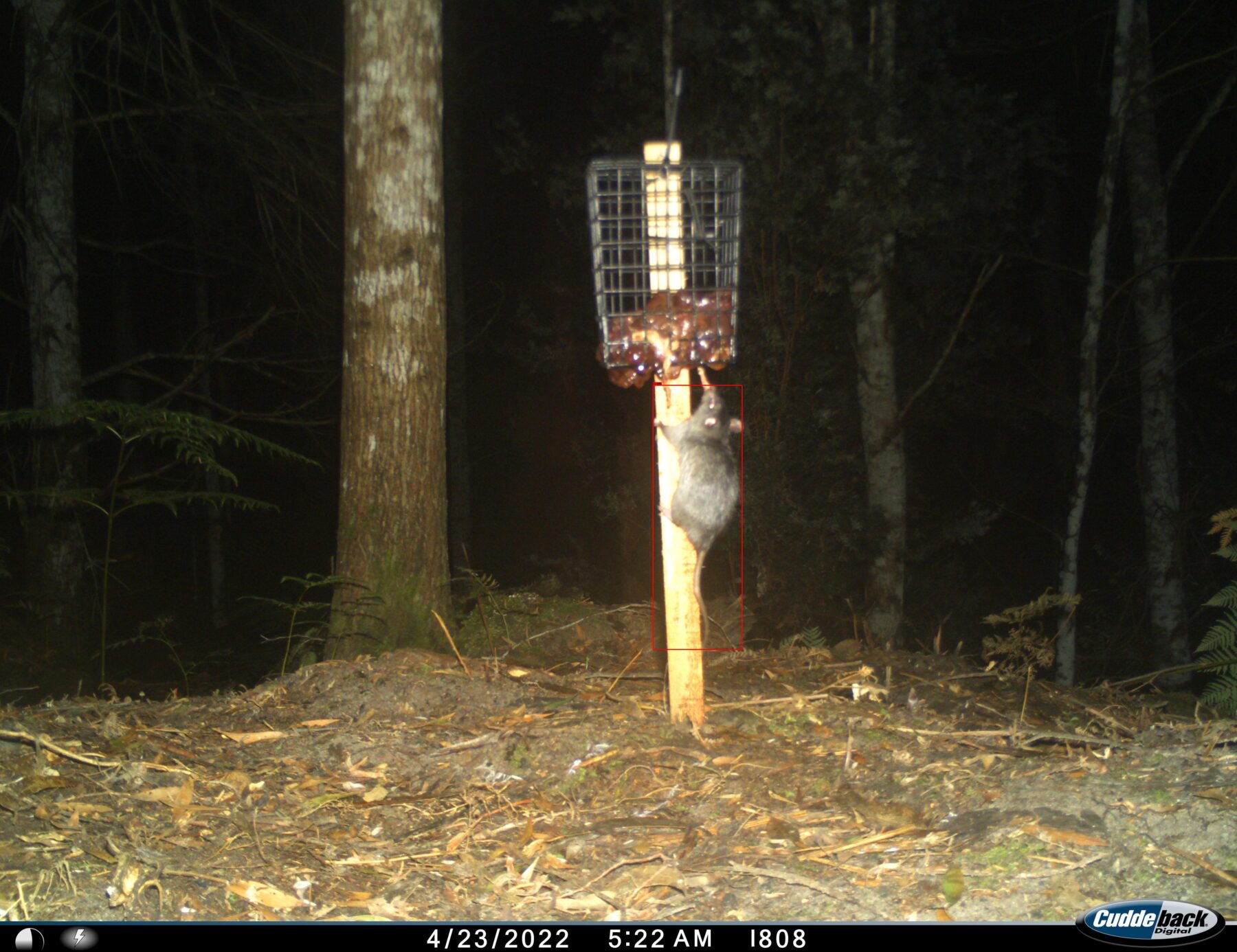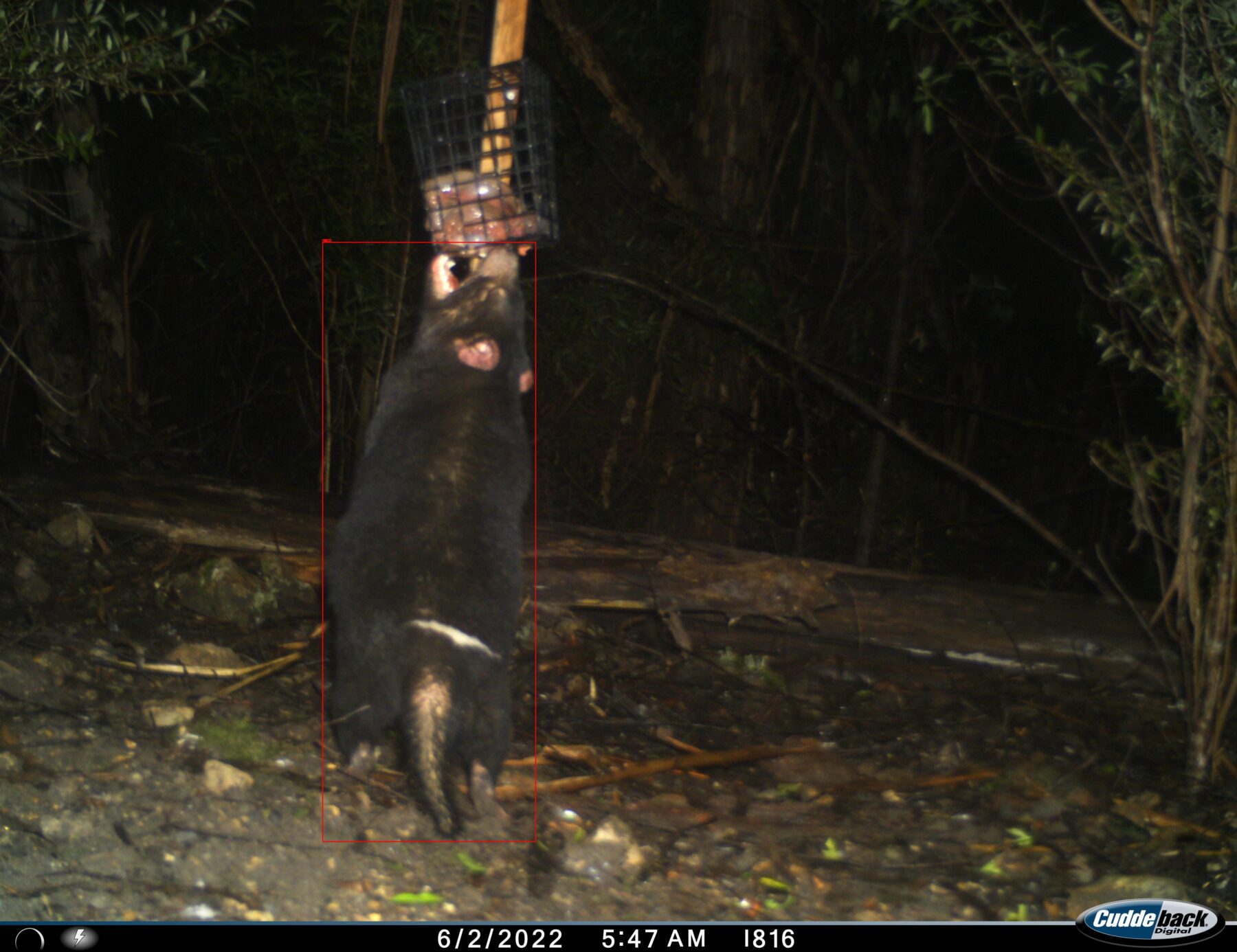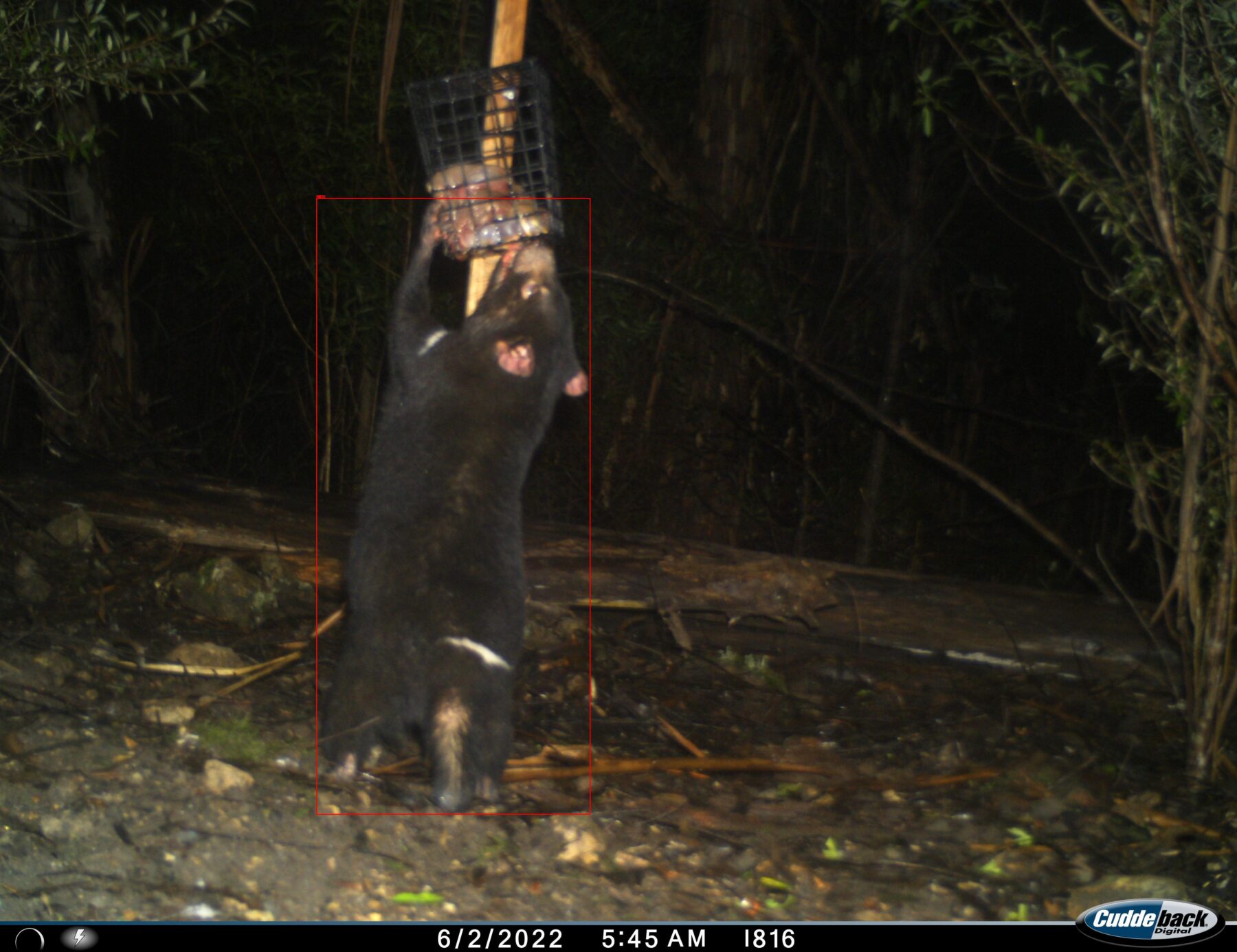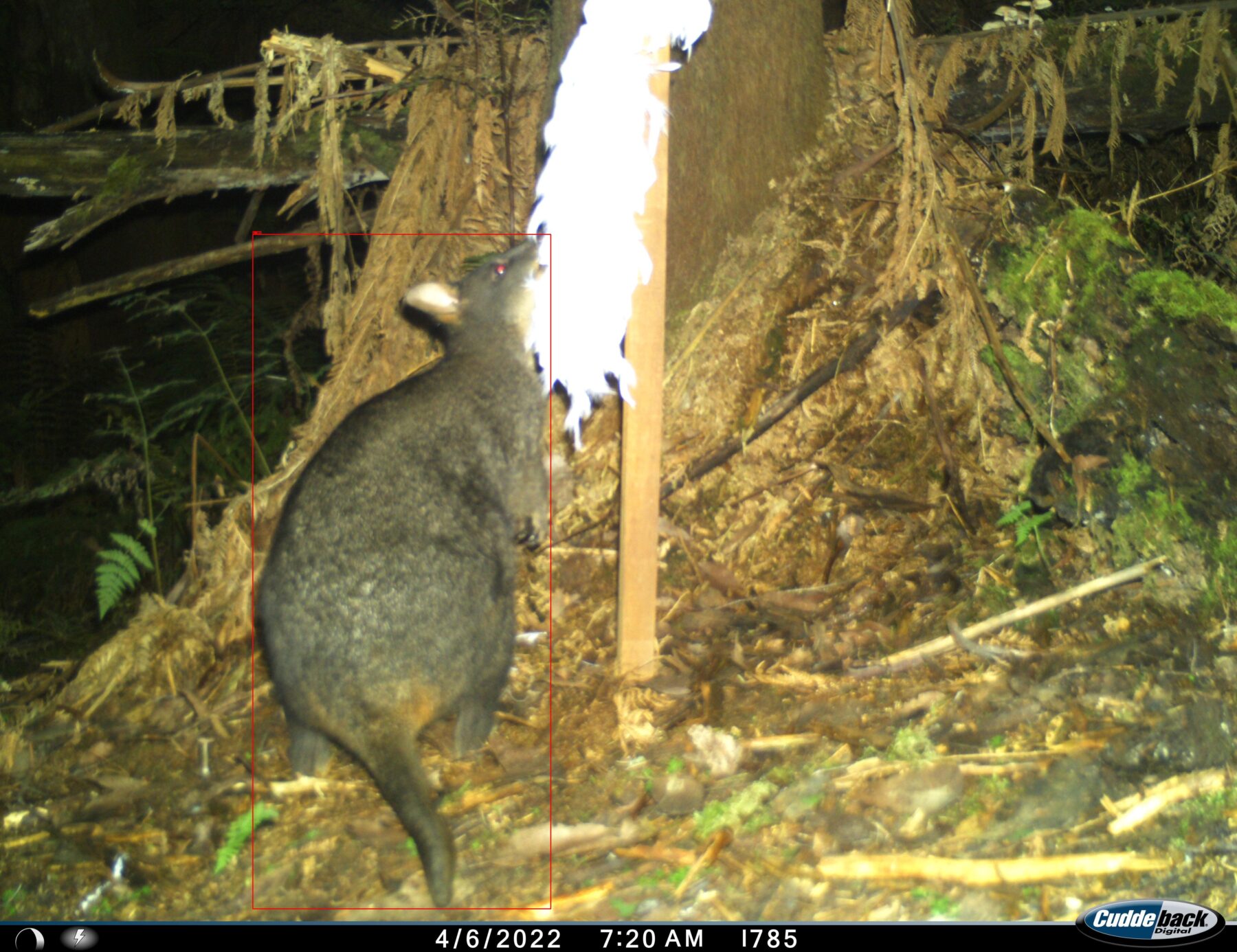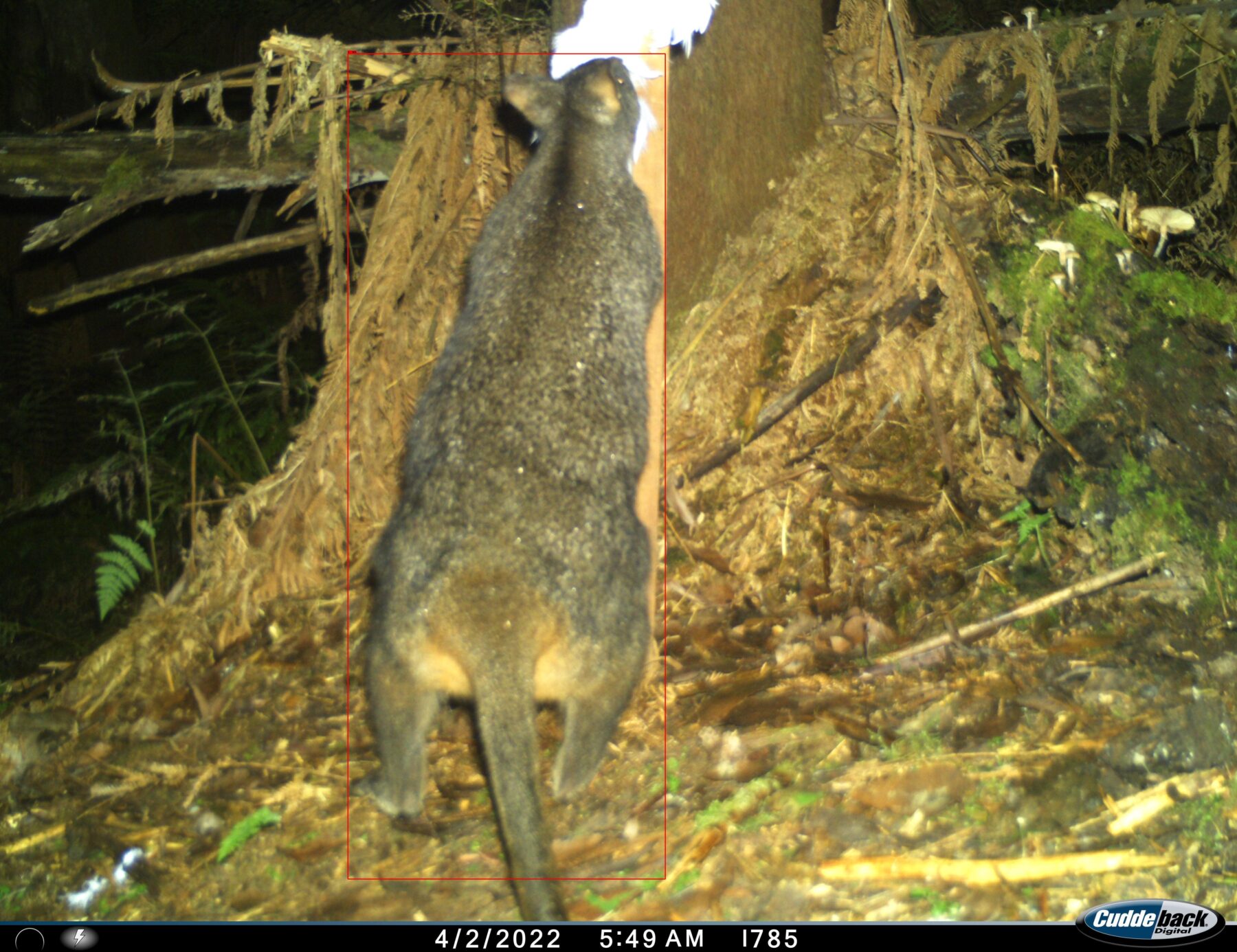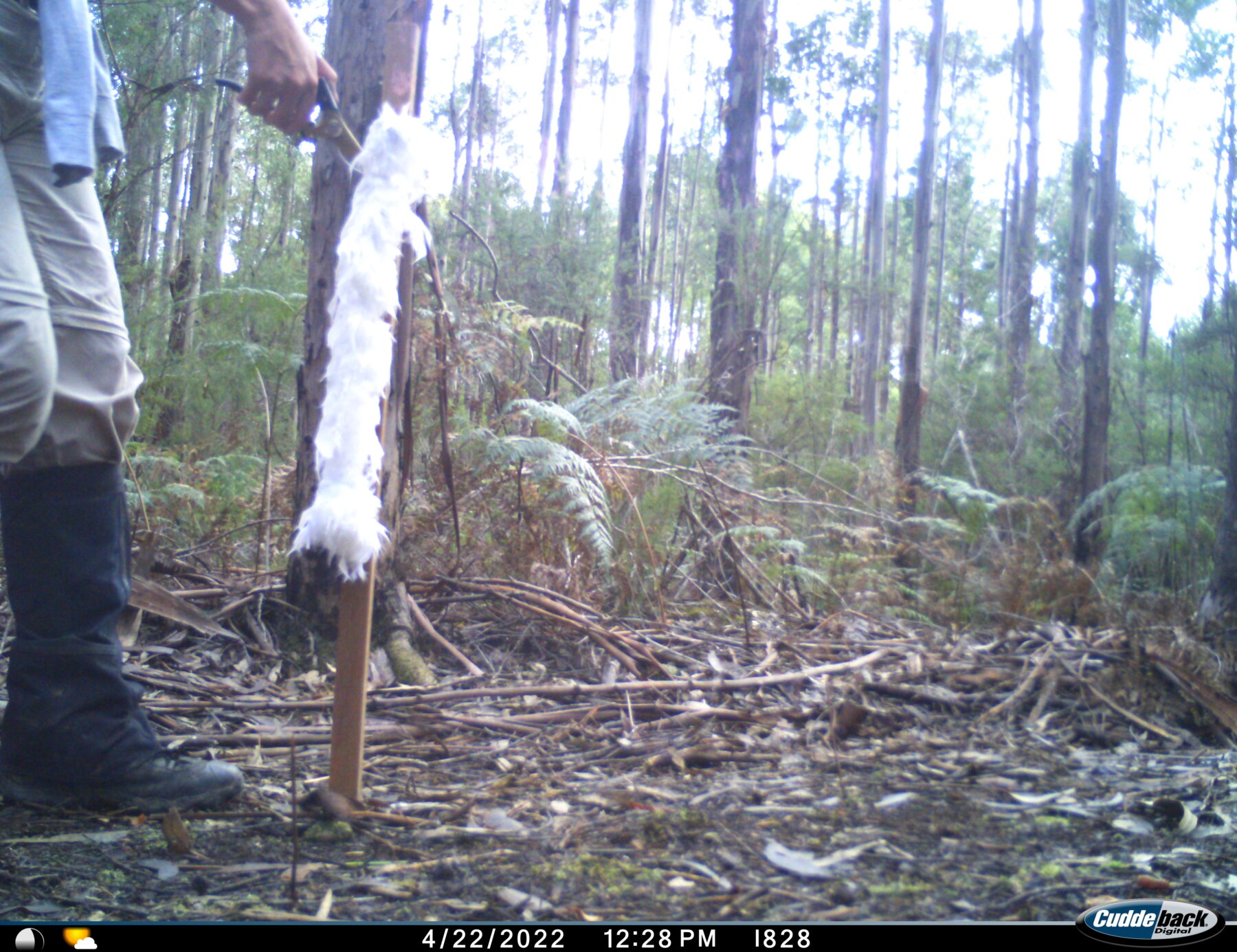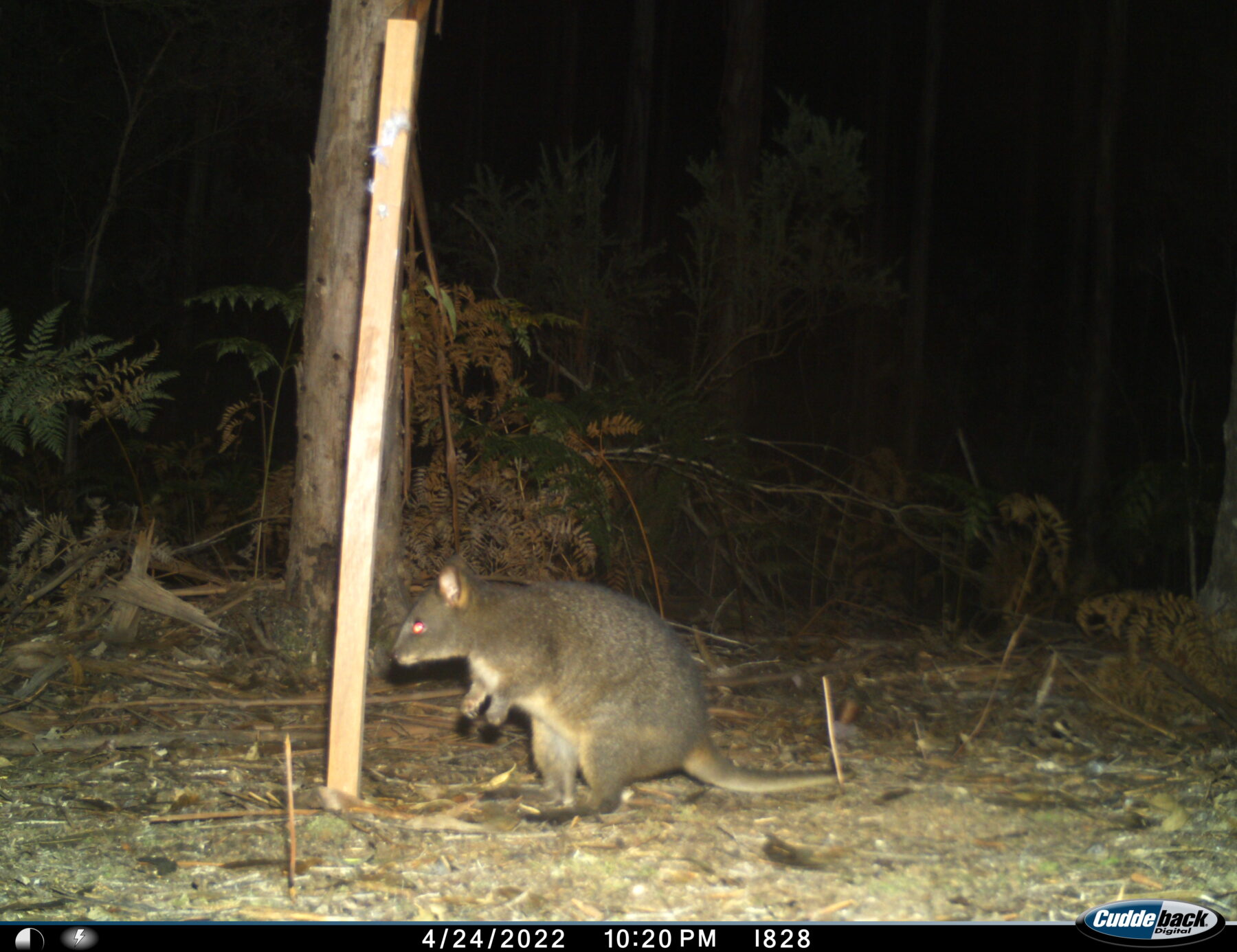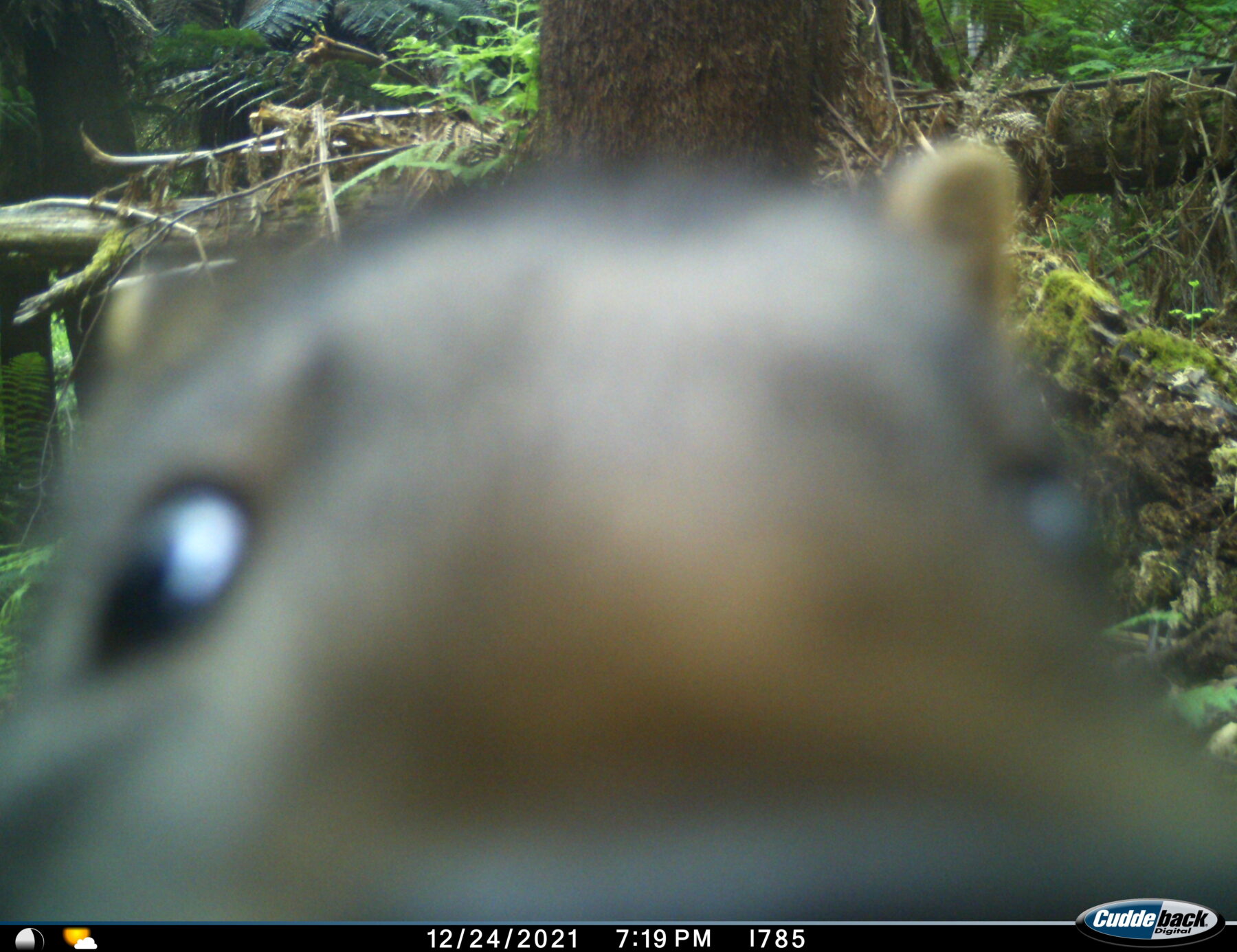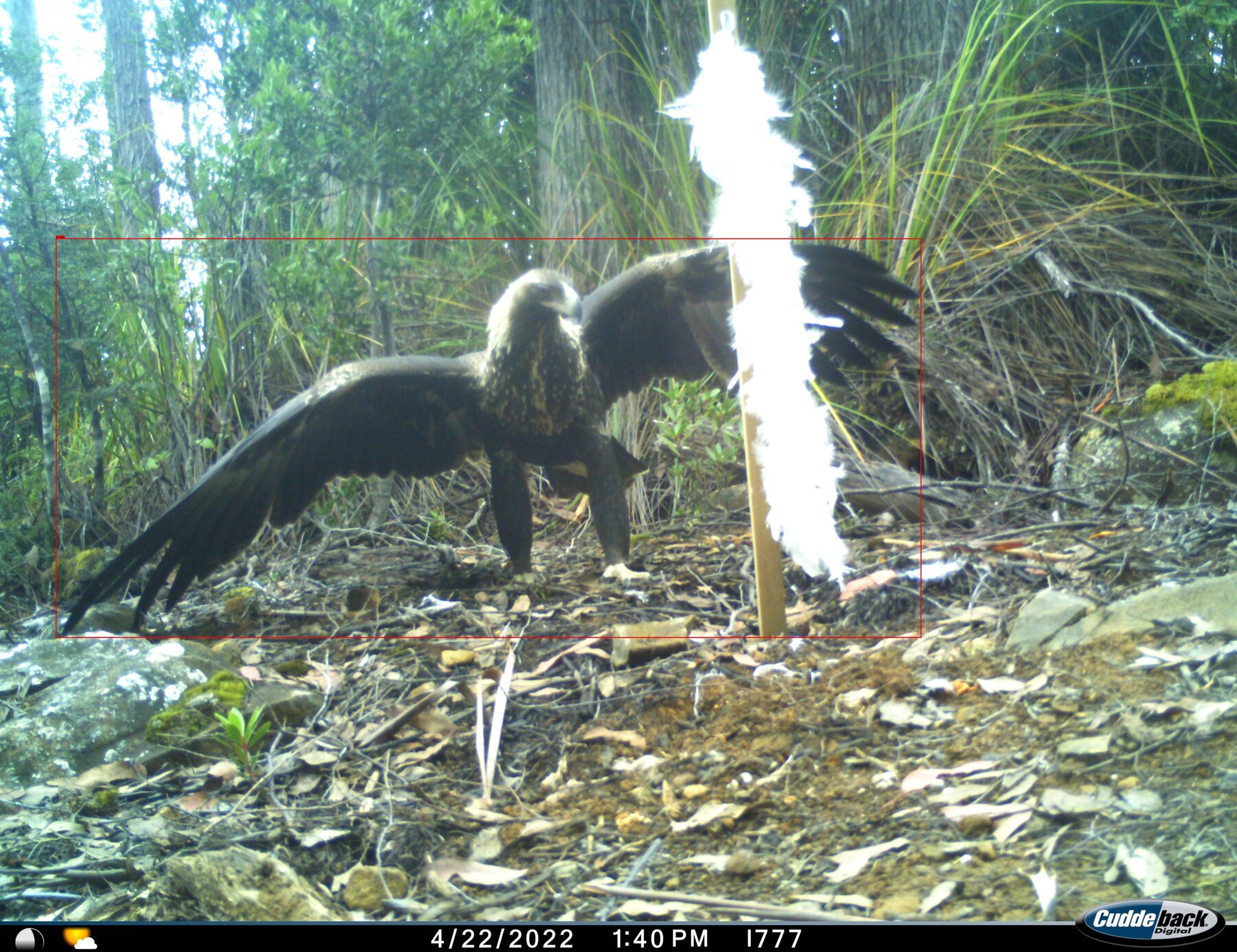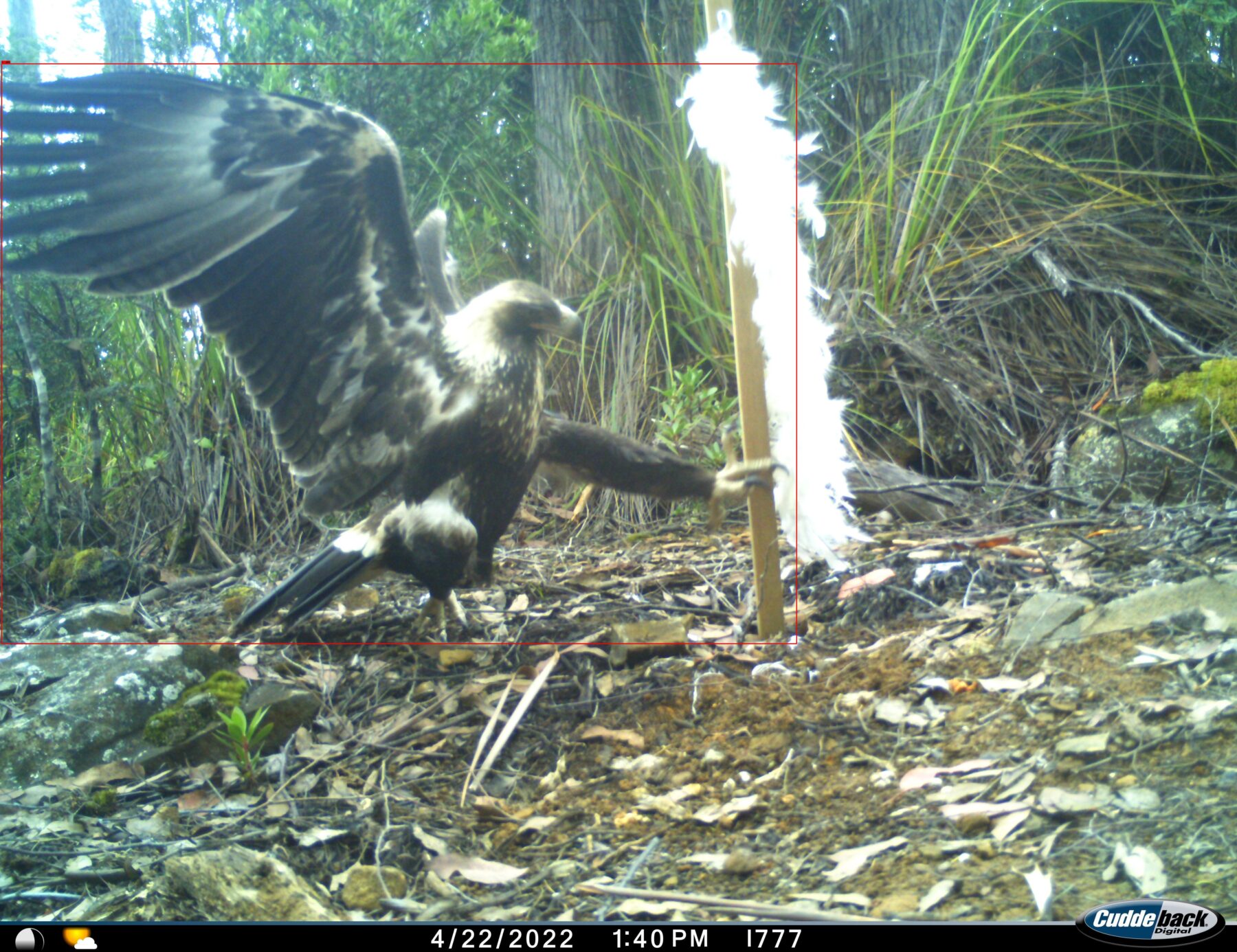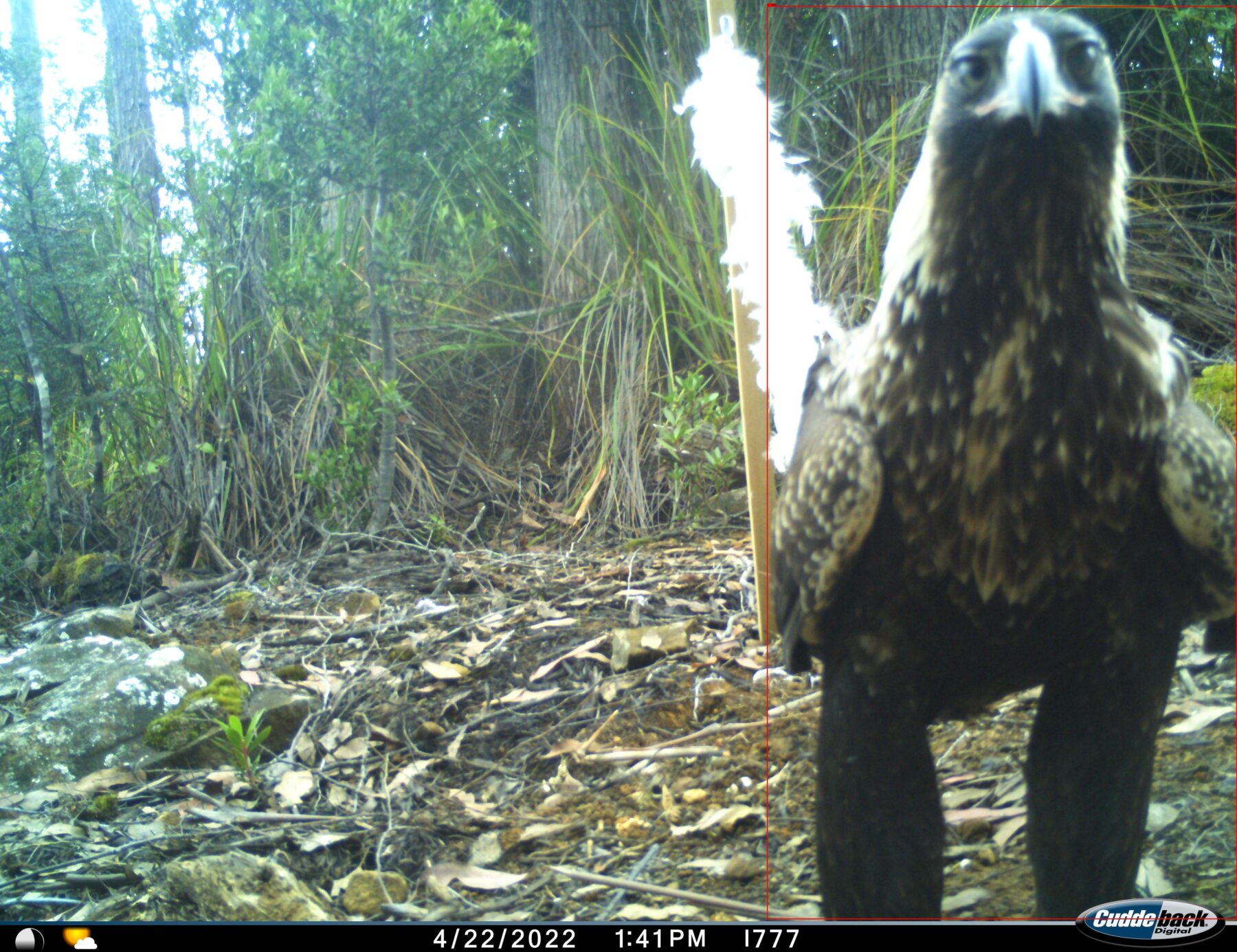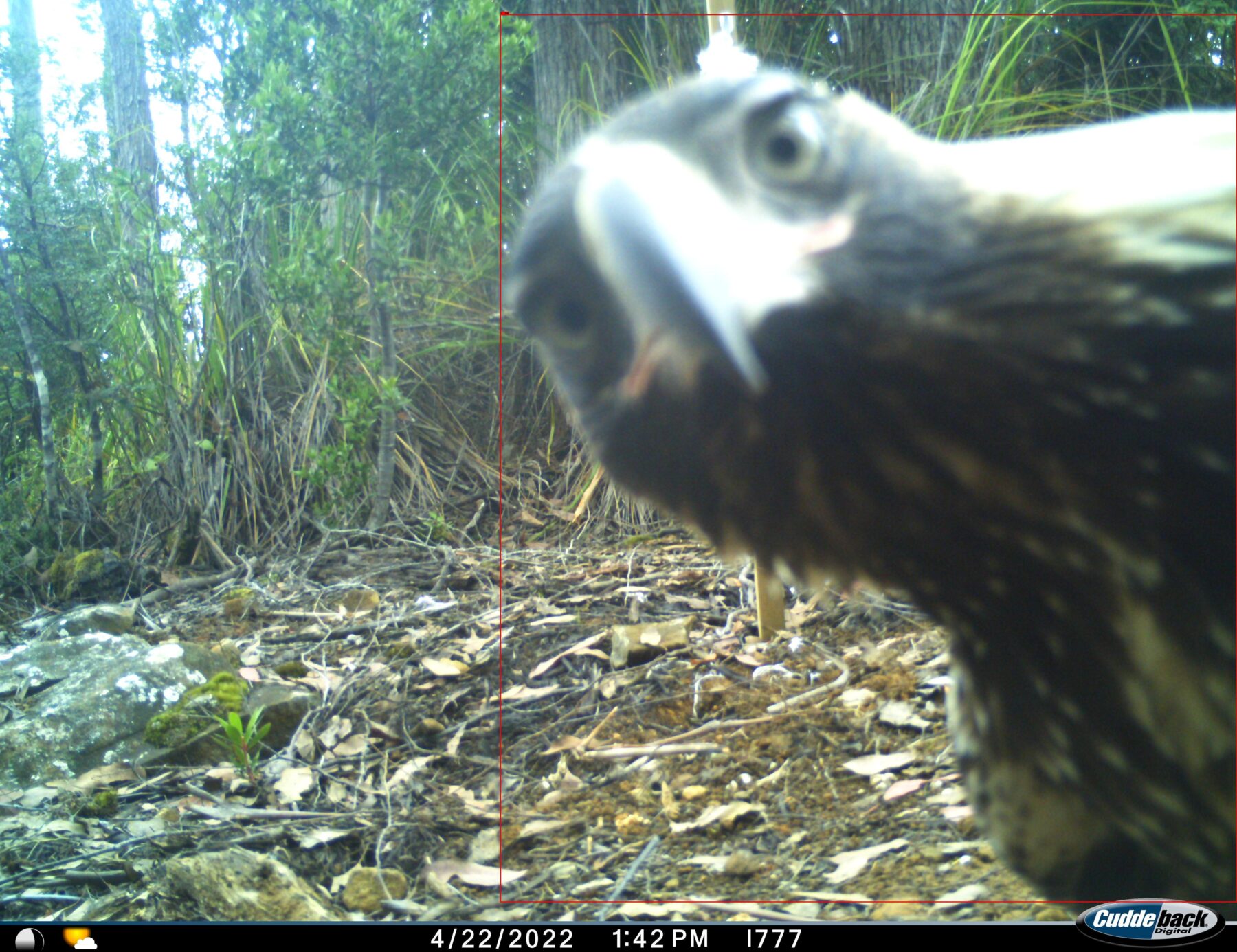“I couldn’t believe it,” says Alexandra Paton, a PhD student at University of Tasmania’s School of Natural Sciences.
“On three separate occasions, with three different cats, they approached the feather boas, eyeing them off, clearly identifying they weren’t an animal, and then proceeding to grab the feather boa and kick it, do the bunny kick, regardless!”
Alexandra saw these scenes play out in sequences of photographs captured with camera traps she had planted in the Tasmanian wilderness:
“Although we need to remember, feral cats in Australia – while they are very different behaviourally to pet cats in most senses, they’ve never seen a human before and they’re terrified of our presence – they are still at the end of the day the same species of cats we have at home, so they’re going to play when they have the opportunity,” Alexandra says.
So, why did she plant these camera traps? Let’s start from the beginning.
Last year, Alexandra set out to discover which lures are most effective at attracting feral cats to walk in front of camera traps.
Images captured by these camera traps are used by land managers to count the number of cats in an area. These numbers are used to monitor whether control measures are working.
“So you can use technology like camera traps to get an idea of how many individuals you have; it’s really useful technology,” says Alexandra.
But, of course, for camera traps to work, the cats actually need to walk in front of them. So lures are used to attract the cats.
“I don’t want land managers who are busy trying to fix the cat problem wasting their time putting out lures that aren’t going to work. So I started this experiment for that purpose.”
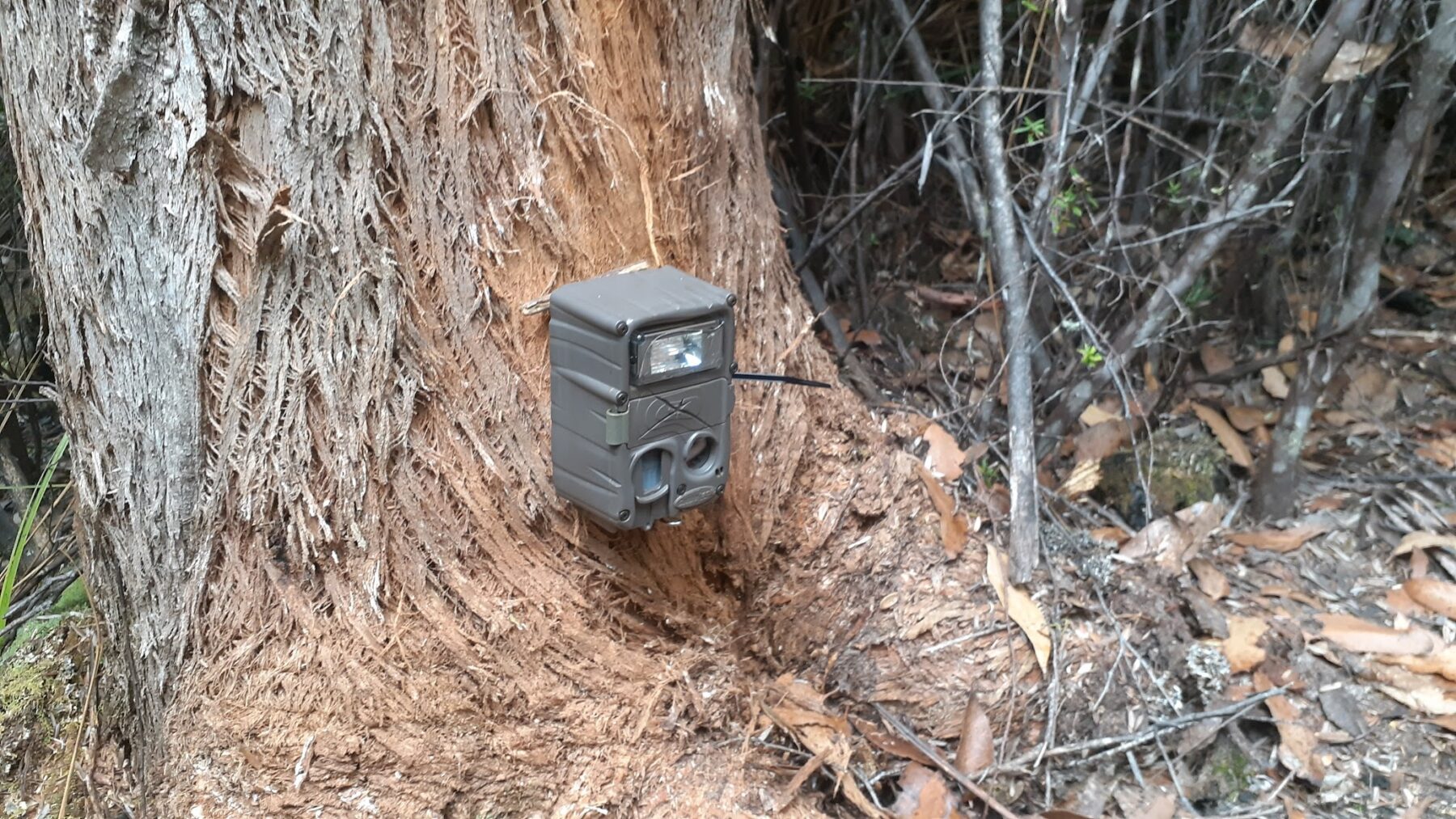
Alexandra set 64 traps across four different grid locations within Tasmania’s southeastern rainforests, rotating four different types of lure:
- Food lure: a cage of meat (wallaby organs)
- Smell lure: tuna oil
- Visual lure: a feather boa
- Null lure: just an empty post
“Lo and behold the feather boas were actually the most effective,” Alexandra says.
“I didn’t really think the feather lures would be that effective. I didn’t think the cats would care.
“And I thought they had better things to do than be playing with feathers!”
Crunching the numbers
With the four-month experiment completed, and the data now analysed, Alexandra confirms the odds of detecting a cat at a camera trap “increased fivefold when using feather boas as compared to using no lure, and fourfold for food as compared to using no lure”.
“However, if Tasmanian devil activity increased as a result of that food lure, then the odds of detecting a cat at a site halved as compared to if we had used no lure.”
This is where it gets even more interesting…
Trickier in Tasmania
Alexandra explains that, while the feather boas were most effective in Tasmania at attracting feral cats, a meat lure could be just as effective on the mainland.
“They [meat lures] can work in arid parts of Australia but it gets a little trickier in Tasmania because we also have native carnivores, including the amazing scavenger, the Tasmanian devil,” she says.
“There’s research out of the University of Tasmania that cats and devils avoid each other – so if we start putting meat in front of our cameras to lure cats to see if they are there, could we actually be shooting ourselves in the foot because devils are far better at finding meat than cats are, so what if we’re actually just attracting devils, and in that sense, deterring cats?
“So, it’s a bit trickier than the mainland.”
Other animals, including eastern and spotted-tailed quolls, rats and Tasmanian devils were drawn to the meat lures.
Curious natives
While the focus of the experiment was on feral cats, some native species provided Alexandra with some light entertainment along the way.
“Pademelons weren’t included in my analysis… but I couldn’t help but enjoy going through all the images of them playing with the feather boas. They were insatiably curious. None of the other macropods did that.”
Alexandra shares a particular story that really tugs at the heartstrings:
“There was one pademelon that every night for a week came back and played and cuddled with the feather boa. Then you see an image of me coming in and removing the feather boa, and there’s a little sequence of the pademelon back the next night looking around really disarrayed because its toy is gone!”
The besotted pademelon.
A wedge-tailed eagle also interacted with the feather boa.
“Where these cameras were deployed is mostly dense canopy cover, but there was one lure I put out in an open space,” explains Alexandra.
“The images showed a juvenile wedge-tailed eagle come down in front of the camera, attack the feather boa, then he stomps around the site and peers into the camera. It’s almost like he’s seen the camera and is saying ‘is this a joke to you? I’m trying to find food!’”
The frustrated wedge-tailed eagle.
Alexandra says capturing these images of native wildlife was not just fun, but will also be helpful to science.
“It’s so useful. At the end of the day we’re removing cats from the environment to protect our native wildlife.
“So if we can also, as a by-product of this experiment, find ways to better monitor our natives as well, and get more pictures of them to measure their recovery or how their populations are changing in response to all the hard work we’re doing, then all the better!”


